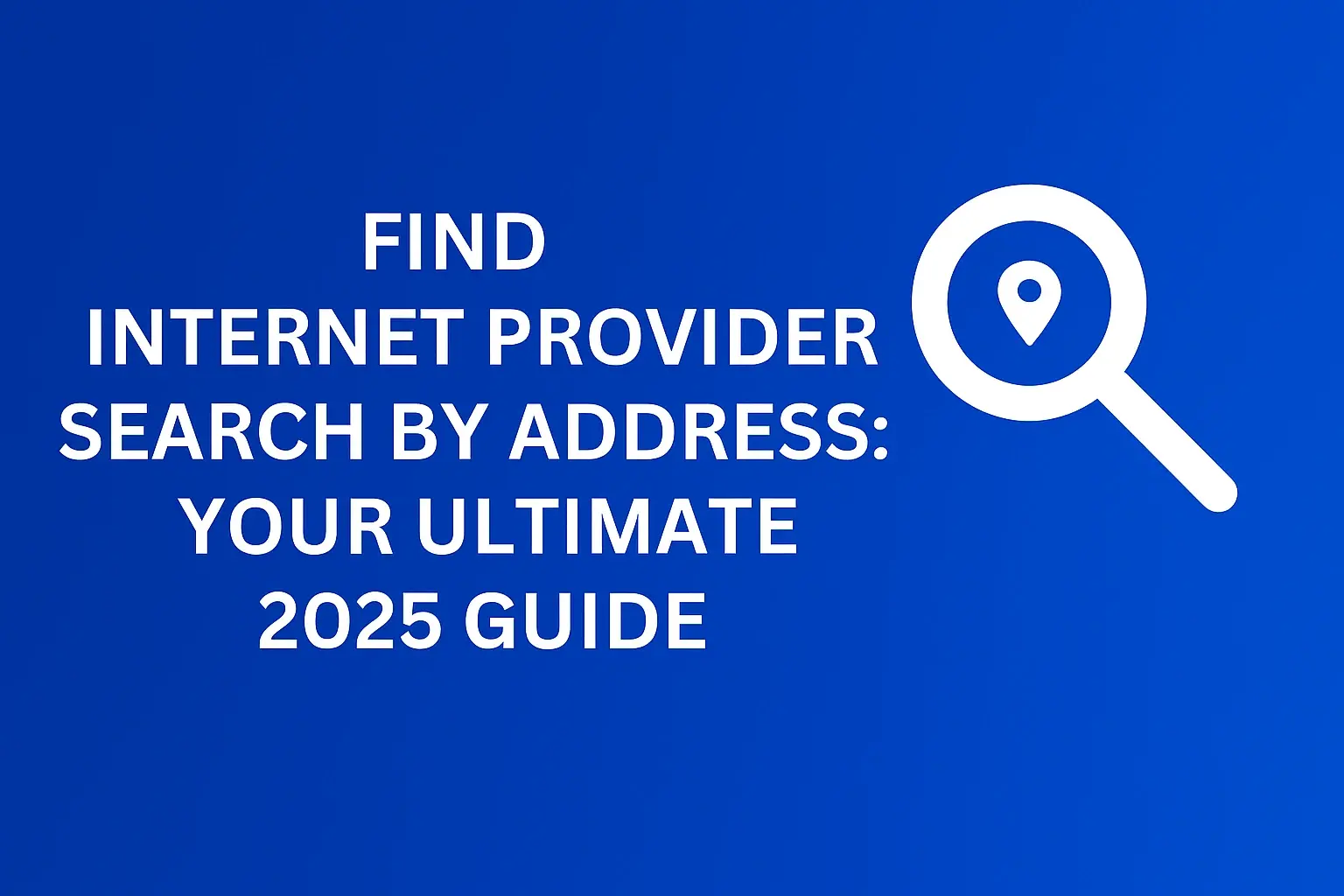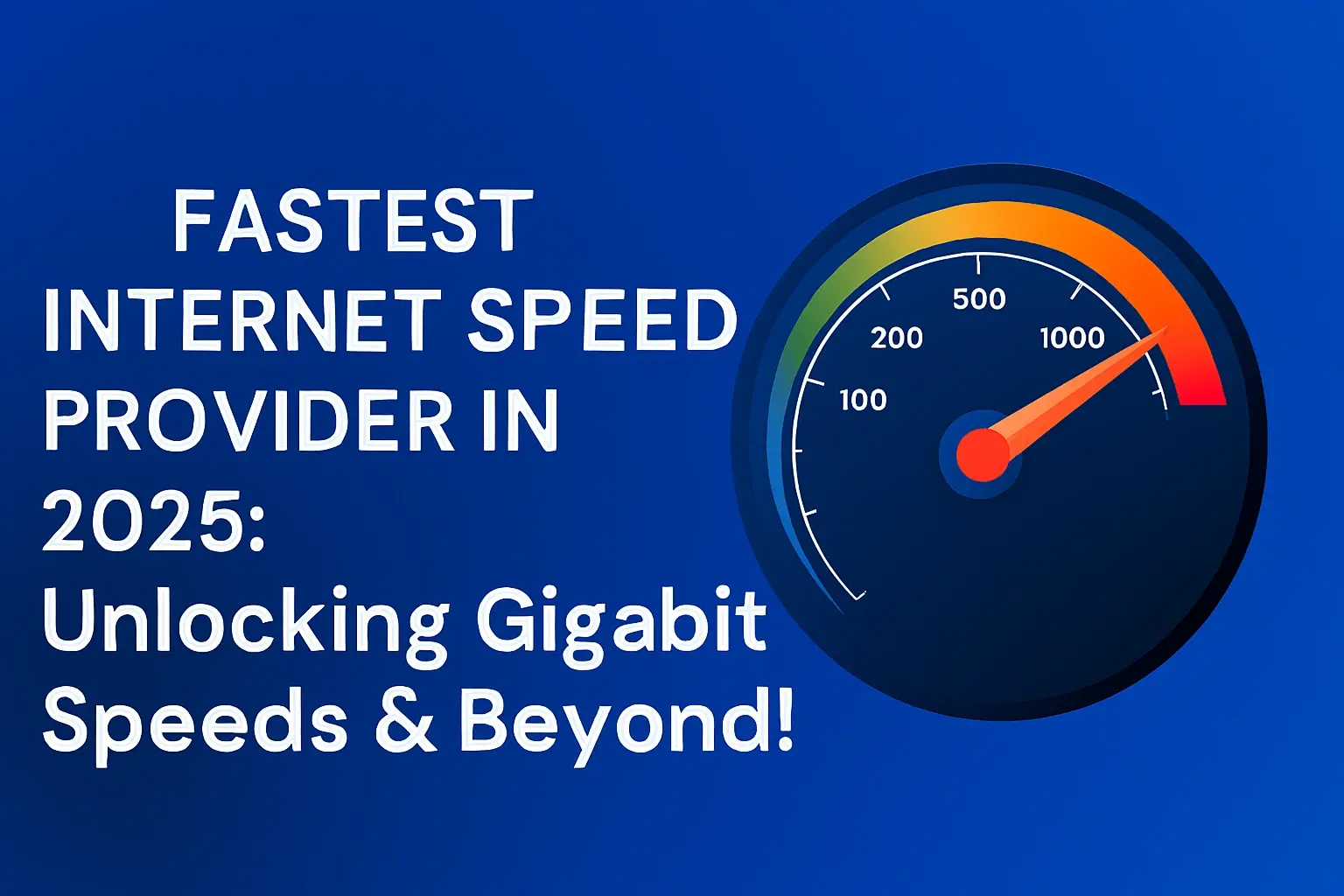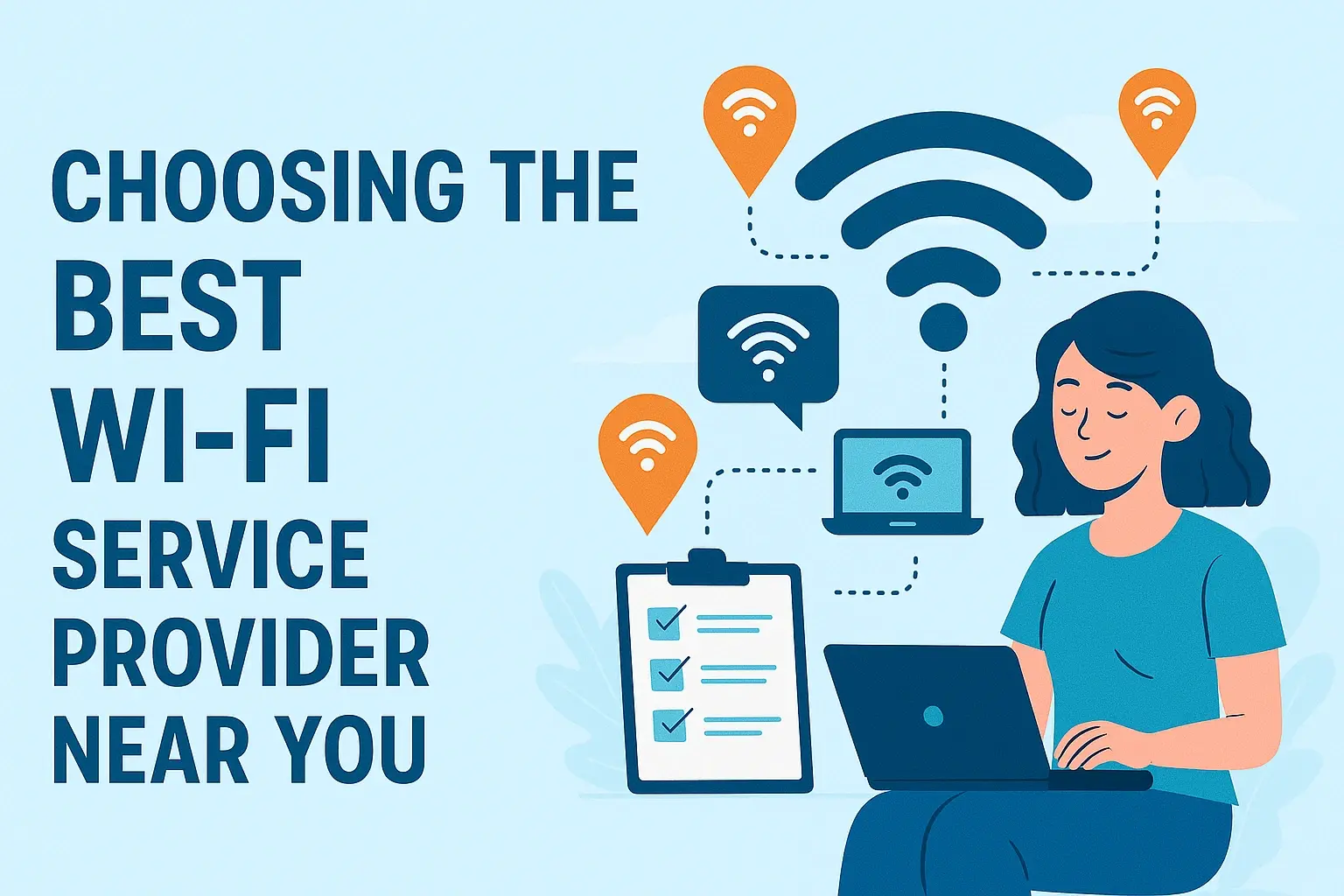Is Fiber Internet Wireless? Exploring the Key Differences

Fiber internet, while incredibly fast, is often misunderstood. Many users wonder if it's a wireless technology. This post clarifies the fundamental differences between fiber and wireless internet, explaining how fiber works and why it's a distinct, wired solution.
What is Fiber Internet?
Fiber internet is a high-speed broadband connection that utilizes thin strands of glass or plastic, called optical fibers, to transmit data. Unlike traditional copper-based internet services, fiber optics use light pulses to send information, enabling significantly faster speeds, lower latency, and greater reliability. It's a wired connection, meaning physical cables are laid to your home or business.
How Fiber Internet Works: The Wired Backbone
The fundamental principle behind fiber internet is the transmission of data as light signals through optical fibers. These fibers are incredibly thin, often thinner than a human hair, and are made from highly pure glass. Data originates from your device, travels to a router, and then is converted into electrical signals. These signals are then transformed into light pulses by a modem or Optical Network Terminal (ONT) at your premises. These light pulses travel through the fiber optic cables, often buried underground or strung on poles, to the internet service provider's (ISP) network. The process is reversed at the destination, where light pulses are converted back into electrical signals that other devices can understand. This direct, physical connection is what defines fiber internet as a wired technology.
Is Fiber Internet Wireless? The Direct Answer
No, fiber internet is not wireless. It is a fundamentally wired technology. The data travels through physical cables made of glass or plastic fibers. While wireless technologies like Wi-Fi are used to connect devices within your home to your router, the connection from your home to the internet service provider's network via fiber optic cable is a physical, wired link. The confusion often arises because many people use wireless devices (laptops, smartphones) to access the internet, and the final leg of the connection within their home is wireless. However, the backbone of the fiber internet service itself is entirely wired.
Understanding Wireless Internet Technologies
To fully appreciate why fiber is not wireless, it's essential to understand the different types of wireless internet technologies available. These technologies transmit data through the air using radio waves or other electromagnetic signals, rather than physical cables.
Fixed Wireless Internet
Fixed wireless internet uses radio waves to connect a stationary location, like a home or business, to a nearby tower or access point. It's "fixed" because it's not designed for mobile devices. Antennas are installed on the user's property and on the provider's tower. The data travels wirelessly between these two points. While it avoids the need for digging trenches for cables to every single premise, it still relies on a wired backbone to the tower itself.
Mobile Wireless Internet (5G, LTE)
This is the type of internet most people associate with wireless. Technologies like 4G LTE and the newer 5G networks use cellular towers to provide internet access to mobile devices like smartphones, tablets, and some laptops. Data is transmitted wirelessly between your device and the nearest cell tower, which is then connected to the broader internet infrastructure, often via fiber optic cables. This is inherently wireless for the end-user's device but relies on wired infrastructure for its backbone.
Satellite Internet
Satellite internet provides a connection by bouncing signals between a satellite dish at your location, a satellite in orbit, and a ground station. This technology is crucial for providing internet access in remote areas where laying cables is impractical or impossible. However, it typically suffers from higher latency due to the vast distances the signals must travel.
Key Differences: Fiber vs. Wireless Internet
The distinction between fiber and wireless internet is significant, impacting performance, reliability, and how the service is delivered. Here's a breakdown of the core differences:
| Feature | Fiber Internet | Wireless Internet (General) |
|---|---|---|
| Transmission Medium | Optical fibers (glass or plastic cables) | Radio waves, microwaves, or other electromagnetic signals |
| Connection Type | Wired (physical cables to premises) | Wireless (airwaves) |
| Speed Potential | Extremely high (multi-gigabit speeds common) | Varies widely; can be high (5G) but often lower than fiber; susceptible to interference |
| Latency | Very low (ideal for gaming, video conferencing) | Generally higher than fiber; can be significantly impacted by distance and interference |
| Reliability | Highly reliable, less susceptible to weather or interference | Can be affected by weather, physical obstructions, and network congestion |
| Infrastructure | Requires physical cable installation (underground or aerial) | Relies on towers, satellites, or access points; less physical infrastructure to the end-user |
| Availability | Still expanding, concentrated in urban/suburban areas | Wider availability, especially in rural or underserved areas (satellite, fixed wireless) |
Speed and Latency
Fiber optic cables can transmit data at the speed of light, allowing for incredibly high download and upload speeds. As of 2025, gigabit speeds (1 Gbps) are commonplace for fiber connections, with multi-gigabit (2 Gbps, 10 Gbps) plans becoming more accessible. Upload speeds on fiber are often symmetrical to download speeds, meaning you get the same fast speeds for sending data as you do for receiving it. This is crucial for tasks like uploading large files, live streaming, and video conferencing. Latency, the delay in data transmission, is also exceptionally low with fiber, typically in the single-digit milliseconds. This minimal delay is why fiber is preferred for online gaming, real-time applications, and professional use cases where responsiveness is paramount.
Wireless internet, on the other hand, has a more variable performance profile. While 5G technology can offer impressive speeds, often exceeding hundreds of Mbps and in some cases reaching gigabit speeds, these are not always consistent. Speeds can fluctuate based on signal strength, network congestion, and the specific implementation of 5G. Upload speeds are also typically much lower than download speeds on most wireless plans. Latency for wireless can range from moderate (20-50 ms for good 5G) to very high (hundreds of ms for satellite). Fixed wireless can offer decent speeds but is limited by the distance to the tower and line-of-sight issues. Satellite internet, due to the vast distances, inherently has high latency, making it less suitable for real-time interactive applications.
Reliability and Stability
Fiber optic cables are remarkably robust and less prone to interference. They are not affected by electromagnetic interference from other devices, nor are they typically impacted by adverse weather conditions like rain, snow, or wind, which can degrade wireless signals. The physical cables are often buried underground, protecting them from physical damage and environmental factors. This makes fiber internet highly reliable and stable, providing a consistent connection that users can depend on for critical tasks.
Wireless internet, by its nature, is more susceptible to external factors. Signal strength can be diminished by physical obstructions such as buildings, trees, and even walls within a home. Weather events, particularly heavy rain or snow, can significantly attenuate radio waves, leading to slower speeds or intermittent connectivity. Network congestion is another major factor; as more users connect to a wireless network (especially mobile or fixed wireless), the available bandwidth is shared, potentially leading to performance degradation for everyone. Satellite internet can also be affected by weather, as well as the orbital path of the satellites.
Infrastructure and Installation
Deploying fiber optic internet requires significant infrastructure investment. This involves laying physical cables, either underground through trenching or aerial installation on utility poles, from the ISP's central office all the way to the end-user's premises. This process can be time-consuming and expensive, which is why fiber availability is still growing and is often concentrated in more densely populated areas. Once the fiber is run to the home, a small device called an Optical Network Terminal (ONT) is typically installed, which converts the light signals into electrical signals that your router can use.
Wireless internet technologies generally require less physical infrastructure to reach the end-user's location. Fixed wireless requires a tower and antennas, but it avoids the extensive cable trenching to individual homes. Mobile wireless relies on an existing cellular network infrastructure, and satellite internet requires satellites in orbit and ground stations. Installation for wireless services often involves mounting an antenna or dish on the exterior of the building and connecting it to an indoor modem or router. This can make wireless a more viable option for areas where fiber deployment is economically unfeasible.
Security
Fiber optic cables are inherently more secure than wireless transmissions. Because data is transmitted as light pulses through a contained cable, it is very difficult to intercept without physically tapping into the cable, which would be immediately detectable. This makes fiber a highly secure medium for data transmission.
Wireless signals, on the other hand, are broadcast through the air. While modern wireless technologies employ robust encryption protocols (like WPA3 for Wi-Fi or strong cellular encryption), there is always a theoretical risk of interception or unauthorized access if these security measures are compromised or not properly implemented. Users must ensure their Wi-Fi networks are secured with strong passwords and up-to-date encryption.
Cost and Availability
Fiber internet is often perceived as more expensive, both in terms of installation and monthly service fees, especially when it's a newer deployment. However, as fiber networks mature and competition increases, prices are becoming more competitive. Its availability is still a limiting factor; while expanding rapidly, it has not yet reached every household, particularly in rural or remote regions. As of 2025, fiber is most prevalent in urban and suburban areas.
Wireless internet options, particularly satellite and fixed wireless, often fill the gap in areas where fiber is unavailable. Satellite internet can be a more expensive option per Mbps compared to wired alternatives, and its performance limitations are a trade-off. Fixed wireless pricing is often competitive, and its availability is expanding. Mobile wireless (5G home internet) is becoming increasingly competitive, offering attractive pricing and performance in areas with strong 5G coverage. The key advantage of wireless is its wider reach, making it accessible to more people, especially in underserved communities.
Fiber Optic Technology Explained
Delving deeper into how fiber optics work reveals why it's such a powerful and distinct technology. The magic lies in the properties of light and the materials used to channel it.
The Glass Strands: How Light Travels
A fiber optic cable consists of multiple thin strands of glass or plastic, each encased in protective layers. The core of the fiber is where the light travels. This core has a higher refractive index than the surrounding cladding. When light enters the fiber at a specific angle, it undergoes total internal reflection. This means the light bounces off the inner walls of the fiber repeatedly, allowing it to travel long distances with minimal signal loss. Think of it like shining a laser pointer down a mirrored tube; the light stays contained and travels along the tube's path. The purity of the glass is critical to minimize scattering and absorption of light, ensuring the signal remains strong over many miles.
Data Transmission Methods
In fiber optic systems, data is encoded into light pulses. A laser or LED (Light Emitting Diode) at the transmitting end converts electrical signals into light. A pulse of light represents a "1," and the absence of a pulse represents a "0" (or vice-versa, depending on the encoding scheme). These light pulses are then sent down the fiber optic cable. At the receiving end, a photodetector converts the light pulses back into electrical signals that computers and other devices can understand. The speed at which these pulses can be sent and the bandwidth of the light spectrum used determine the data transmission rate. Different wavelengths of light can be used simultaneously within the same fiber, a technique called Wavelength Division Multiplexing (WDM), to further increase capacity.
Advantages of Fiber Optic Internet
The advantages of fiber optic internet are numerous and significant:
- Superior Speed: Capable of speeds far exceeding copper-based technologies, supporting symmetrical gigabit and multi-gigabit connections.
- Low Latency: Minimal delay in data transmission, crucial for real-time applications.
- High Bandwidth: Can carry much more data than traditional cables, supporting the increasing demands of streaming, cloud computing, and multiple connected devices.
- Reliability: Immune to electromagnetic interference and less affected by environmental conditions.
- Longer Distances: Light signals can travel much further over fiber without significant degradation compared to electrical signals over copper.
- Security: Inherently more secure due to the difficulty of intercepting light signals without detection.
- Future-Proofing: The infrastructure is capable of supporting future increases in bandwidth demands.
Wireless Internet Technologies in Detail
Let's explore the nuances of the different wireless internet technologies that are often contrasted with fiber.
Fixed Wireless: How It Works
Fixed wireless operates similarly to a point-to-point radio link. An ISP installs a high-capacity antenna on a tower, and users install a corresponding antenna on their property. A direct line of sight between the two antennas is often ideal for optimal performance, though some systems can work around minor obstructions. Data travels wirelessly between the tower and the user's antenna. The tower itself is then connected to the ISP's network, typically via fiber optic cable, providing the internet backbone. Speeds can vary significantly, from tens of Mbps to several hundred Mbps, depending on the provider, technology used (e.g., 5 GHz, 60 GHz spectrum), and distance from the tower. It's a good solution for areas where fiber is not yet available but where there's a need for more robust internet than traditional DSL.
Mobile Wireless: The Cellular Network
Mobile wireless internet, powered by 4G LTE and 5G, utilizes a vast network of cellular towers. Your smartphone, tablet, or a 5G home internet device connects to the nearest tower via radio waves. These towers are interconnected and linked to the internet backbone, again, predominantly through fiber optic cables. 5G technology represents a significant leap, offering higher speeds, lower latency, and greater capacity than previous generations. It uses a broader range of radio frequencies, including millimeter waves (mmWave) for extremely high speeds over short distances, and lower frequencies for wider coverage. However, performance can still be affected by signal strength and network congestion. For home internet, 5G can be a compelling alternative to cable or DSL in areas with good coverage.
Satellite Internet: Reaching the Unreachable
Satellite internet is designed to provide connectivity to the most remote locations. A user's satellite dish communicates with a satellite in geostationary orbit (GEO) or low Earth orbit (LEO). The satellite then relays the signal to a ground station, which is connected to the internet. For LEO constellations like Starlink, multiple satellites are used in conjunction, reducing latency compared to traditional GEO satellites. GEO satellites are positioned approximately 22,000 miles above Earth, leading to inherent high latency (often 500-700 ms). LEO systems, with satellites much closer, can achieve latencies in the 20-50 ms range, making them more competitive. Despite advancements, satellite internet can be expensive, data-capped, and still susceptible to weather interference.
The Role of Wireless in Fiber Networks
It's important to recognize that fiber and wireless technologies are not always mutually exclusive; they often work together. While fiber provides the high-capacity backbone for internet service providers, wireless technologies are frequently used for the "last mile" connection to the end-user or for connecting different parts of the network wirelessly. For instance:
- Fiber to the Premises (FTTP) aims to bring fiber optic cables directly to each home or business, but even then, Wi-Fi is used wirelessly within the home.
- Fixed wireless often connects to a fiber optic network at the tower.
- Mobile 5G networks are heavily reliant on fiber optic backhaul to connect cell towers to the core network.
- Wireless backhaul can be used to connect remote cell sites or Wi-Fi hotspots to the wired network when laying fiber is too difficult or costly.
So, while fiber internet itself is wired, wireless plays a crucial role in delivering and utilizing that internet service in many scenarios.
Choosing the Right Internet Connection for You
The best internet connection depends on your specific needs, location, and budget. Consider these factors:
- Location: Is fiber available in your area? If not, what are the best wireless options (fixed wireless, 5G, satellite)?
- Usage: Do you stream 4K video, play online games, work from home with video conferencing, or primarily browse the web and check email? High-demand users will benefit most from fiber.
- Speed Requirements: How much speed do you truly need? Check your current usage patterns and future needs.
- Budget: Compare the monthly costs, installation fees, and any equipment rental charges.
- Reliability: How critical is a stable, uninterrupted connection for your daily activities?
If fiber is available and within your budget, it generally offers the best performance across the board. However, if fiber is not an option, advanced wireless technologies like 5G home internet or reliable fixed wireless can provide excellent alternatives, especially if you're in an area with good coverage. Satellite internet remains a vital option for the most remote locations, but users should be aware of its performance limitations.
Future Trends in Internet Connectivity
The landscape of internet connectivity is constantly evolving. We can expect to see several key trends:
- Continued Fiber Expansion: ISPs are investing heavily in expanding fiber networks to more homes and businesses, aiming for ubiquitous gigabit access.
- Advancements in 5G and Beyond: 5G technology will continue to mature, offering higher speeds and lower latency, potentially rivaling wired connections for many use cases. Future generations (6G and beyond) promise even greater capabilities.
- Increased Integration of Wireless and Wired: Expect more seamless integration between wired and wireless technologies, with hybrid solutions becoming more common.
- Satellite Internet Evolution: LEO satellite constellations will continue to grow, offering more competitive speeds and lower latency, making them a viable option for more users.
- Focus on Rural Broadband: Governments and private companies are increasingly focused on bridging the digital divide, with initiatives to bring high-speed internet to underserved rural areas, often through a combination of fiber extension and advanced wireless.
These trends indicate a future where faster, more reliable internet access is available to a wider population, leveraging the strengths of both wired and wireless technologies.
Conclusion: Fiber vs. Wireless Internet
In summary, fiber internet is a wired technology that uses light signals transmitted through glass or plastic cables to deliver exceptionally fast, low-latency, and reliable internet access. It is distinct from wireless internet, which transmits data through the air using radio waves or other electromagnetic signals. While wireless technologies like 5G, fixed wireless, and satellite internet are crucial for providing connectivity in various scenarios and often serve as the final link to devices, the underlying infrastructure of fiber optic networks remains wired. Understanding these key differences is vital for making informed decisions about your internet service. For the ultimate in speed, reliability, and future-proofing, fiber optic internet stands out as the premier choice where available.





